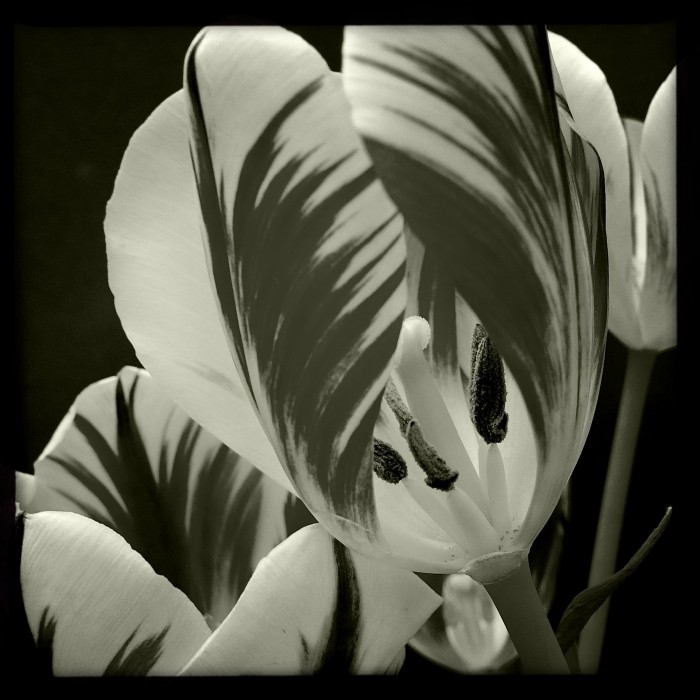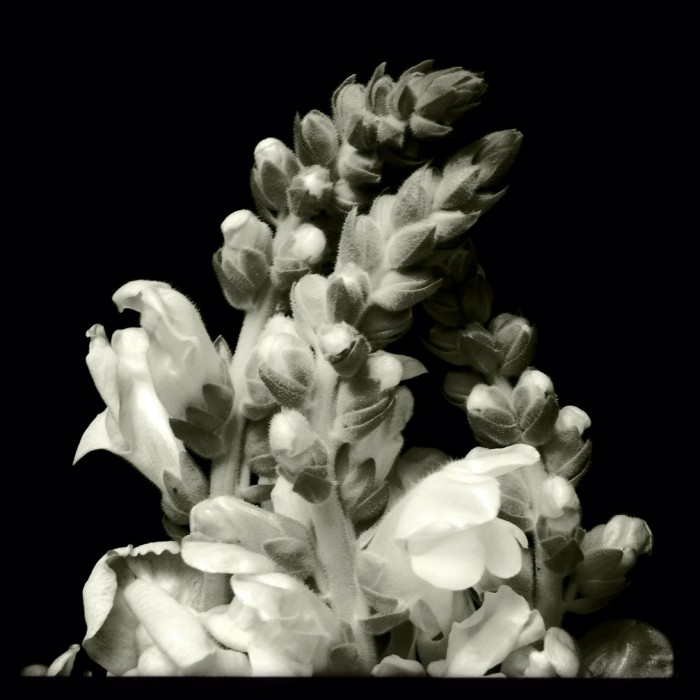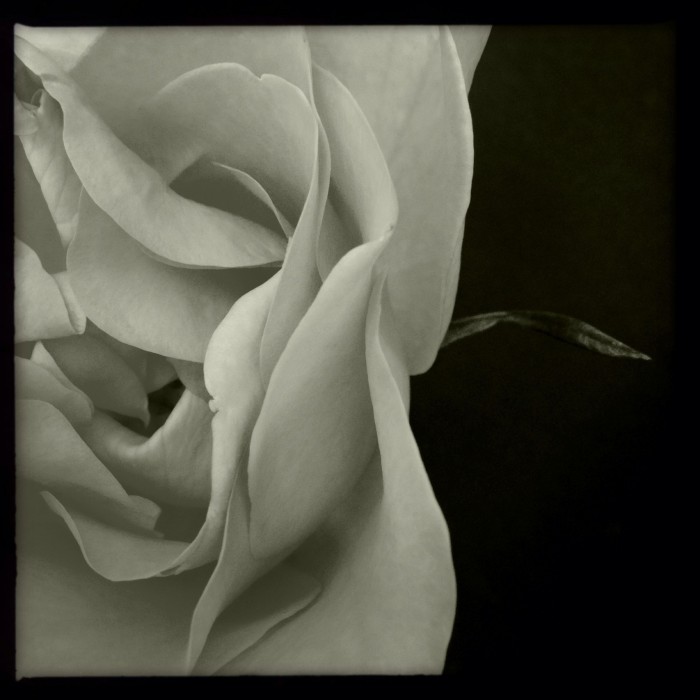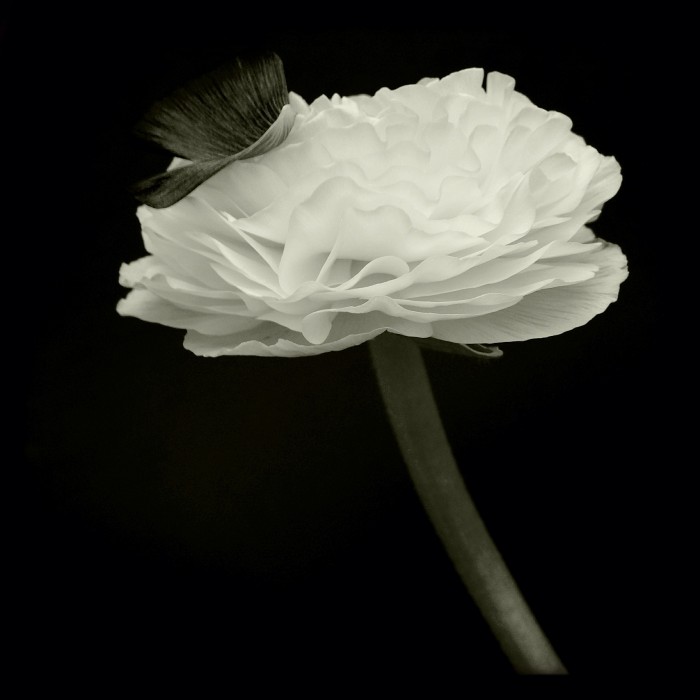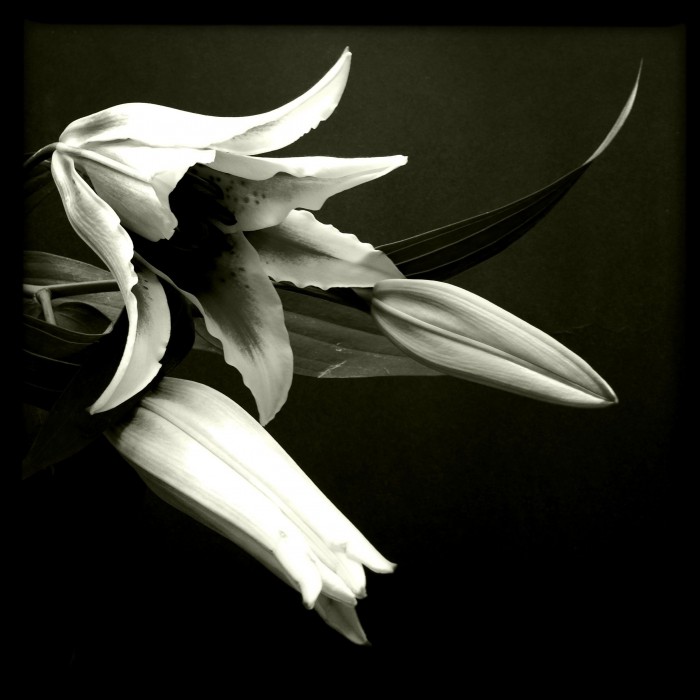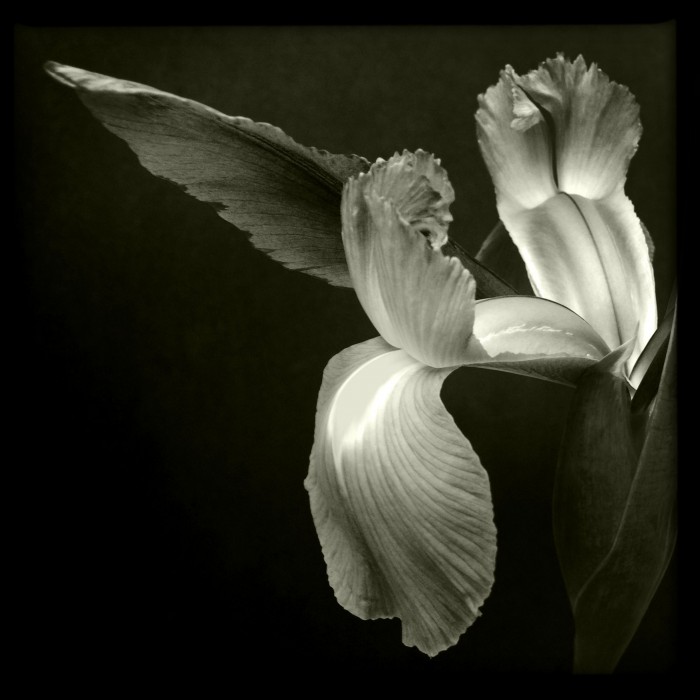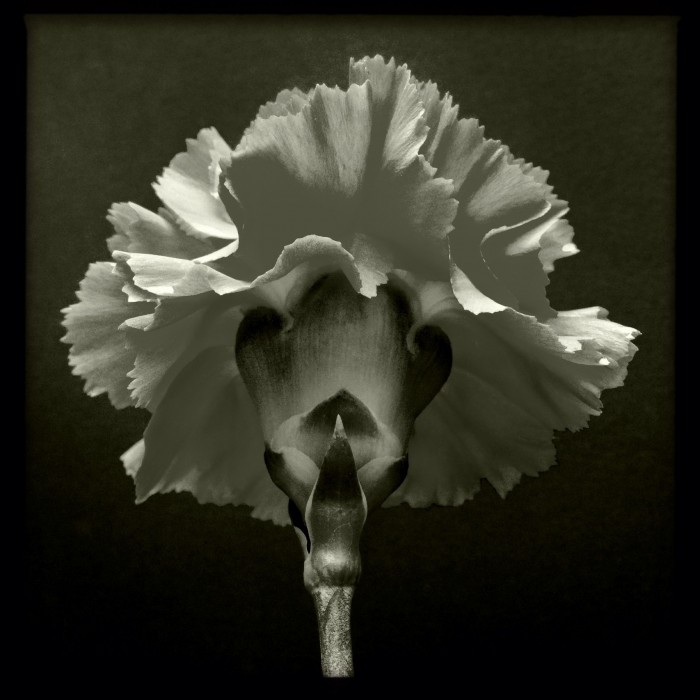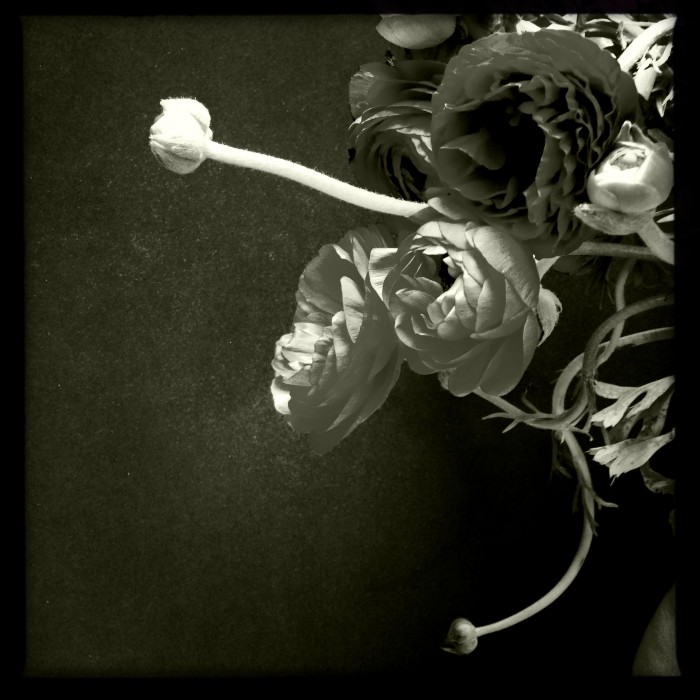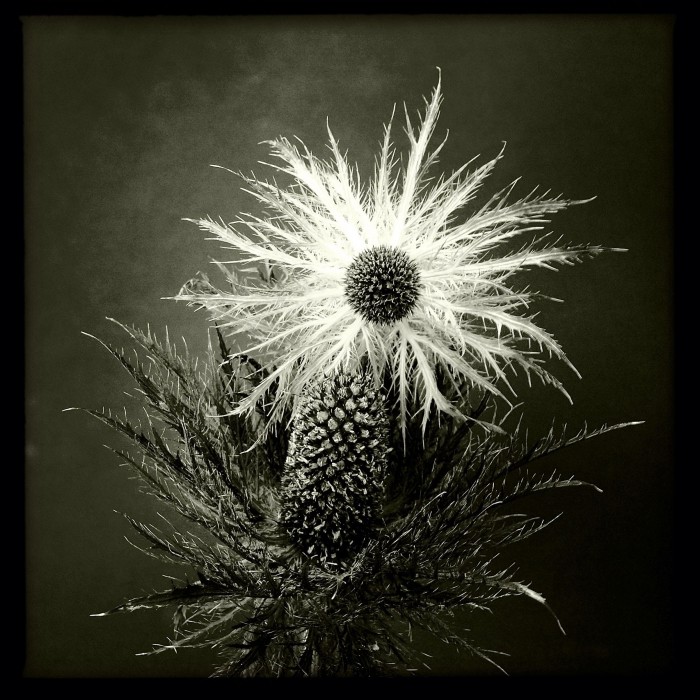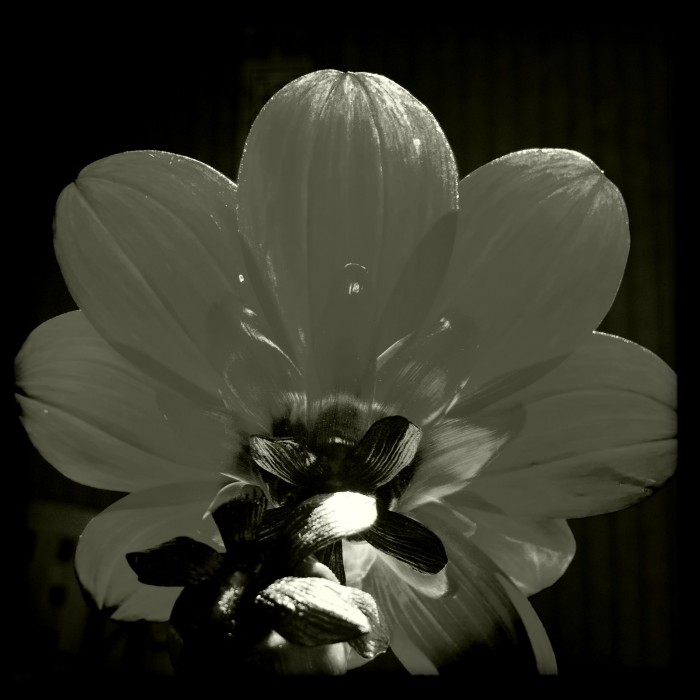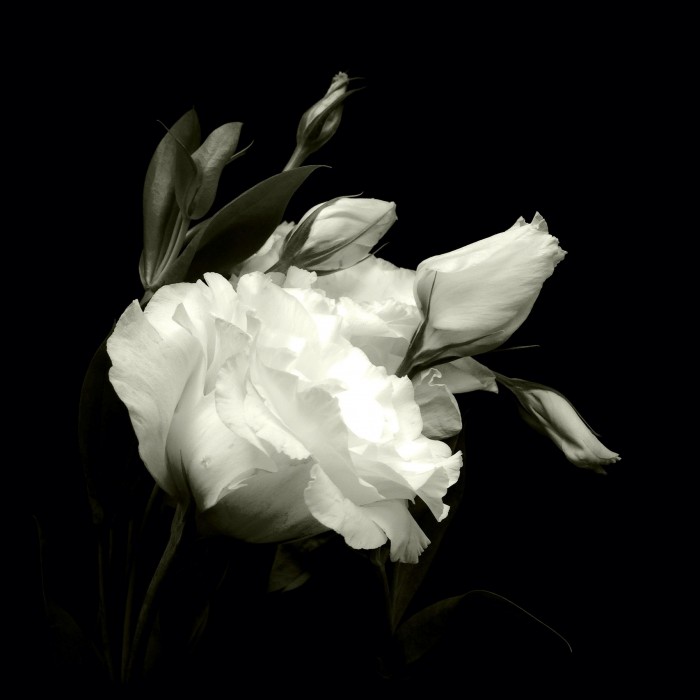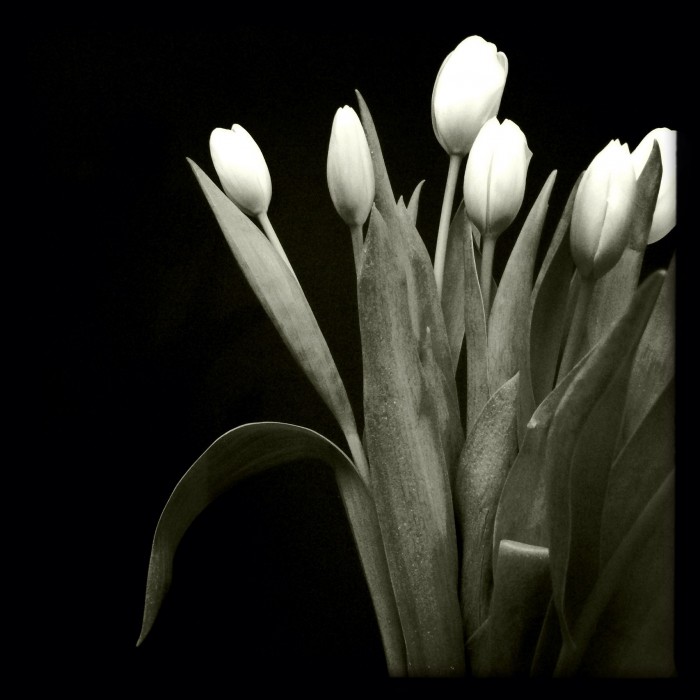
It’s finally spring, and after a winter of fearing yet another visit from the polar vortex, we are happy to share with you the work of Sarah Skeen in celebration of newness and change. Sarah’s beautifully sharp photos of cut flowers have us thinking about the easily clichéd subject in new ways. By shooting in black and white, Sarah directs attention away from the colors of her subjects and to their dynamic forms and shapes. The result is still life portraiture full of striking motion. Sarah spoke with Art Editor Janelle DolRayne about documenting the short lifespan of cut flowers, capturing the movement of the flowers’ bloom and fade cycle, and how the continuously changing light of the day and season affects her process.
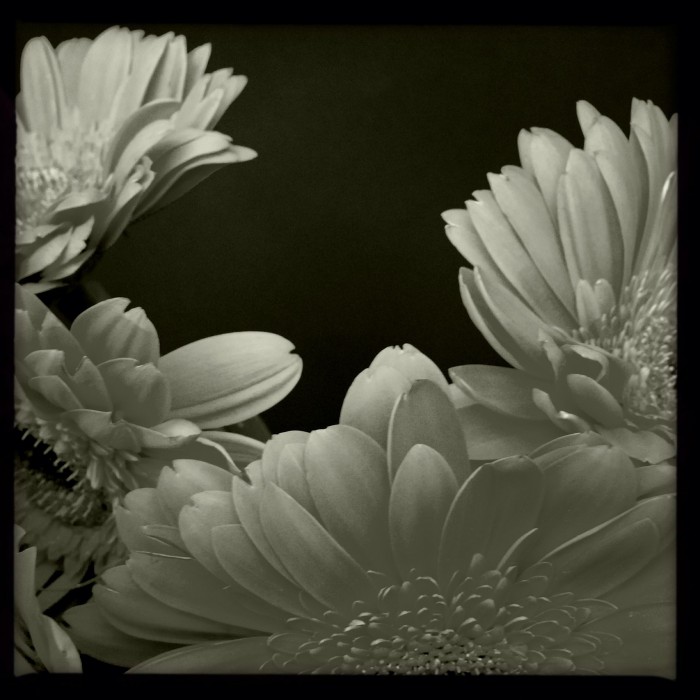
JDR: To start, I am really interested in how you get the flowers. How do they end up in your studio?
SS: The flowers come from different places—sometimes the florist, other times the supermarket. Some of them came from my yard. It’s always a treat when someone brings me flowers, too. They don’t even realize they are delivering me a future project, and it’s always nice to commemorate a thoughtful gift.
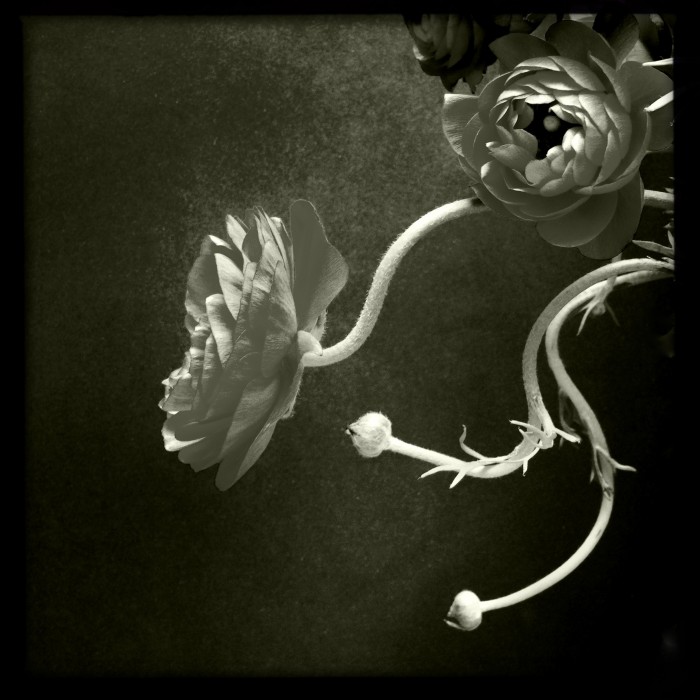
JDR: How did the project start for you? What drew you and your camera to flowers as a subject?
SS: I’m sure you’d be hard pressed to find someone who’s not drawn to flowers, but I worked for a gardening company for many years so flowers were part of my everyday environment. I find now that I always have to have one type or another in the house. It’s fun to anticipate what will be available during the different seasons, and growers are always hybridizing and coming up with new things to look forward to. Gardeners like to share, and I guess by photographing flowers, the sharing is extended.
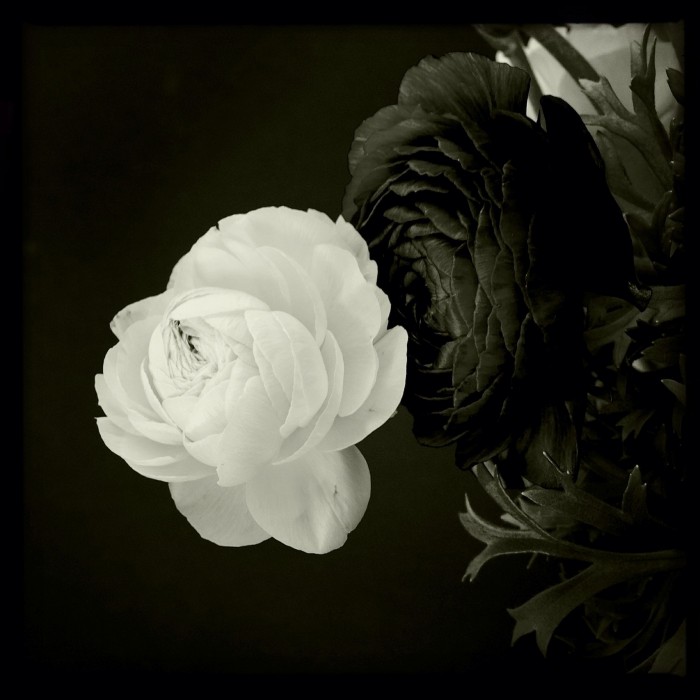
JDR: Yeah, I was thinking about my own short stint with photography as a young person—the wildflowers in my parent’s backyard were my first subjects. I remember being drawn to their colors. If I could rely on anything looking good it was the luscious colors they offered me as subjects. Here, though, you don’t rely on color. Can you tell me a little about your decision to shoot in black and white?
SS: Flowers offer so many things for one to appreciate when around them—color, changing form and shape, sometimes a fragrance. Choosing black and white lets the viewer take in just one of those amazing attributes and makes it more impactful. I also think we can become immune to certain flowers, like daffodils. We see them in the grocery store—there they are in yellow bunches—we can walk right by them because we’ve seen them hundreds of times. But if you view them in black and white, and study them strictly on the basis of shape and form, I think it reminds people how truly beautiful and unique a daffodil really is.
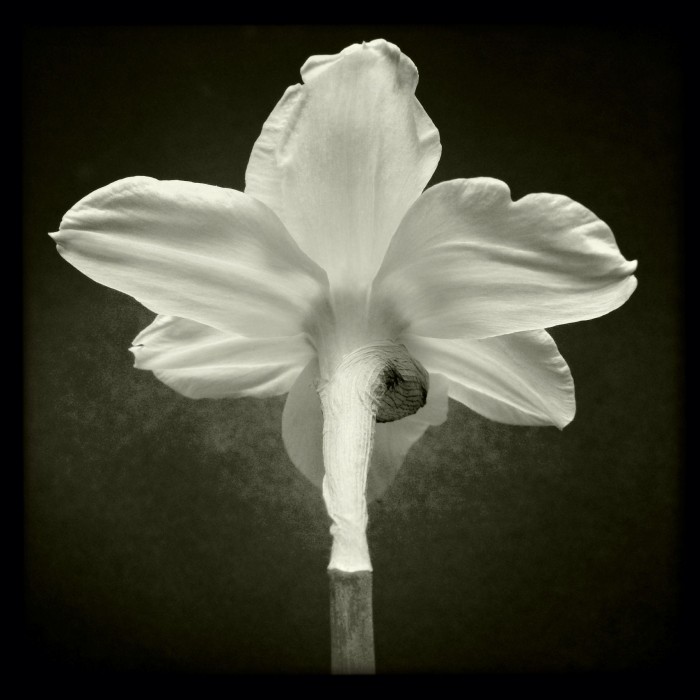
JDR: Can you tell me a little about your artistic process? What you are shooting with?
SS: Most times I rely on my good old Nikon digital SLR. Sometimes though I layer by photographing print photos with a cell phone. I’m also a Lomography fan—that camera is what keeps me connected to film. My dream is to someday create prints in the darkroom using early printing processes that changed the surface and tonal qualities of a printed image—that’s kind of the look I am going for here. The truth is though that the camera is just half of the equation. I depend on available light that changes throughout the day. I get very different results depending on the time of day I take the photographs, and actually the same thing could be said for time of year.
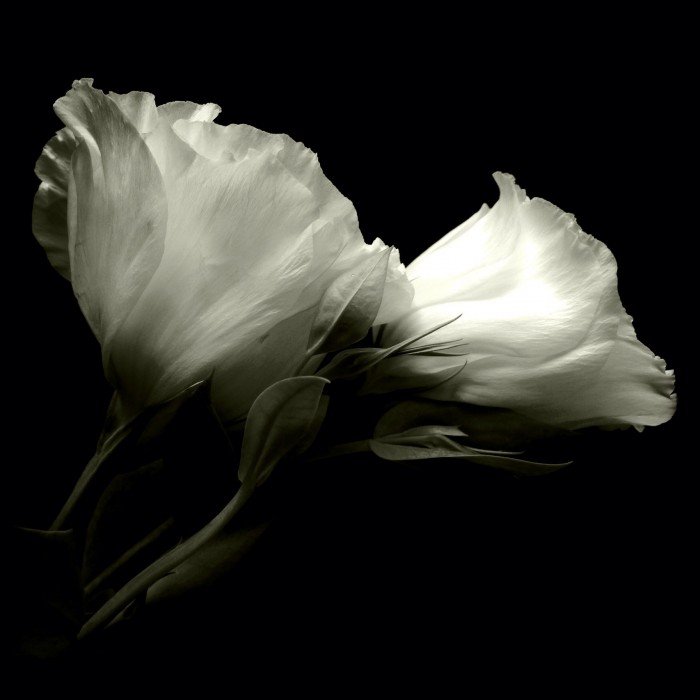
JDR: It seems like environment is extremely important to your process, i.e. needing flowers around the house and depending on the changing light throughout the day/season. What aesthetic environment do you hope the photos create for the viewer?
SS: I think whenever you work in black and white you create something that has document-like qualities. Cut flowers live for such a short amount of time. I like to document or record the fact that each of them was present in my life in the same way I like to document the people in my life through portraiture. These are essentially flower portraits. Until flowers are capable of taking selfies, I plan to keep on working on their behalf.
When I talk about wanting to work with old-school darkroom techniques (old gelatin silver process), it’s because the prints that result from those kinds of processes are so incredibly precise in the information captured. When you view them, you can’t help but want to get in close to see every detail—I think that’s what I would like people to do when viewing these photos so as not to miss anything about each blossom and leaf. Old prints are also very fragile and can fade if not properly cared for, much like cut flowers.
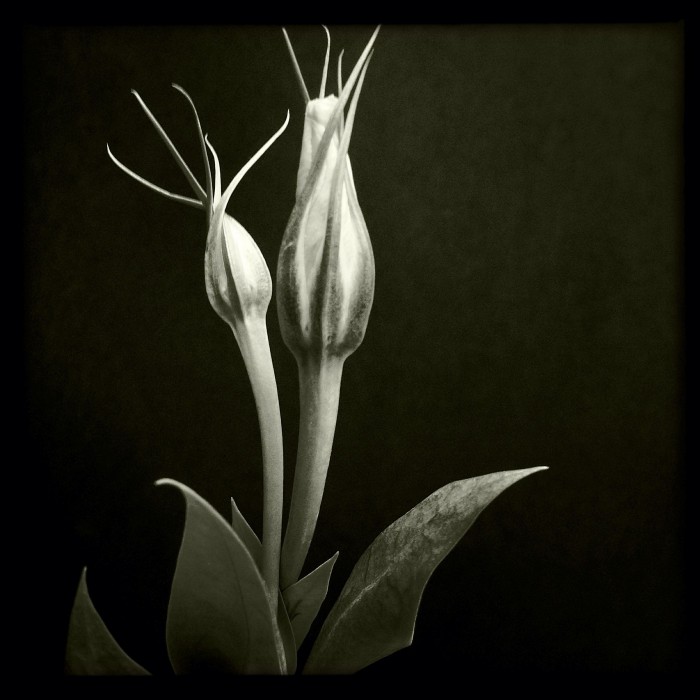
JDR: You capture such subtle and beautiful movements in these flowers. At times they feel like dancers or like they are reaching out toward the viewer, though the photos themselves resemble still lifes. How are you thinking about movement when you are photographing?
SS: You could definitely say there are dance-like elements involved when photographing flowers, and most times, the flowers are doing all the work. They create movement by going through their bloom and fade cycle, and depending on the variety, that can go quite quickly. If you bring a tulip indoors, a flower Mother Nature designed to bloom during cool weather, the show can be over within just a day or two. It’s also fun to make an arrangement of flowers, leave it over night, and come back the next morning to see that the flowers have rearranged themselves. Every stage of a flower’s brief existence creates a new opportunity to capture something—a bud is often just as beautiful as the flower at full bloom.
